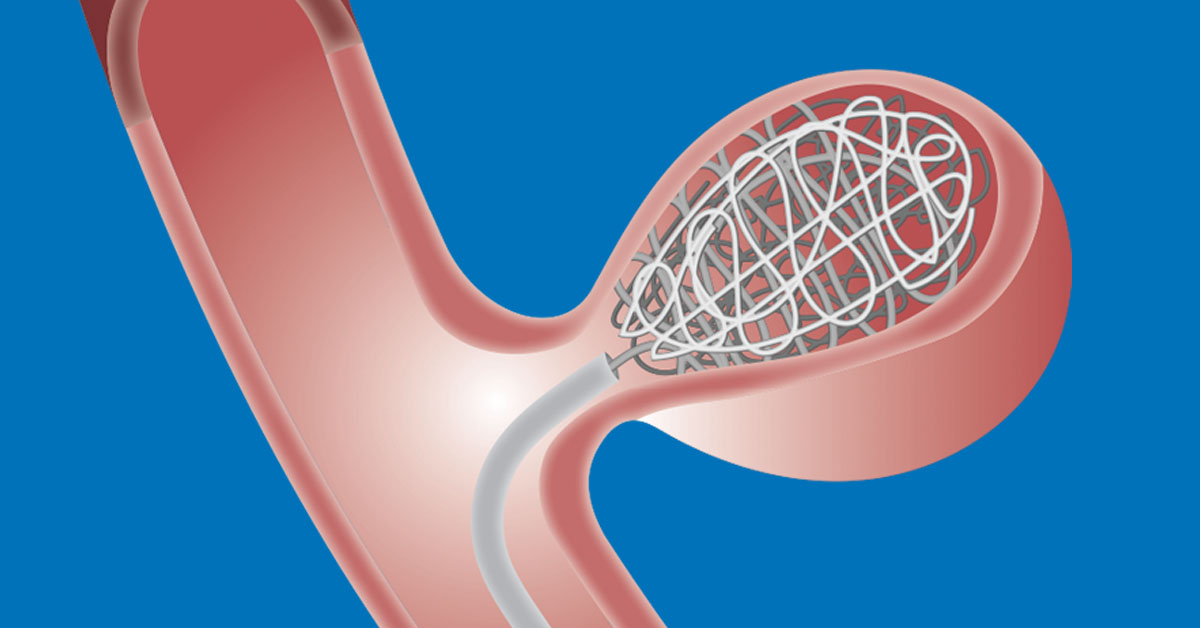Coil Embolization for Brain Aneurysm is a procedure used to treat aneurysms in a minimally invasive fashion

Coil Embolization for Brain Aneurysm
What is a Coil Embolization for Brain Aneurysm?
Coil Embolization is a procedure used to treat an aneurysm. This is accomplished by placing a small and soft metal coil inside the aneurysm. This serves to block blood flow and prevent rupture of the aneurysm.
Who needs a Coil Embolization for Brain Aneurysm?
An aneurysm is a weak area in a blood vessel that causes bulging, dilation or ballooning of the blood vessel. Although aneurysms are more common in older people and women, they can occur at any age in either sex. In most cases, aneurysms form at the point where blood vessels divide into branches. Cerebral aneurysms are usually found at the base of the brain, just inside the skull. Their size usually ranges from 1/8 inch to 1 inch.
An aneurysm can exist in a ruptured or unruptured state. A ruptured aneurysm is one that has broken open.
What are the steps in a Coil Embolization for Brain Aneurysm?
Preparing for the Procedure
Once the patient has been placed in the correct position and anesthesia has been administered, some of the hair may be shaved at the insertion site, which is usually near the femoral artery, a blood vessel near the groin area.
Inserting the Coil
Your surgeon uses fluoroscopic imaging to insert a catheter, which is a long and thin tube, into the femoral artery. Your doctor then carefully guides the catheter through to the aneurysm site in the brain. Your surgeon then moves a small wire through the catheter and then coils the wire inside the aneurysm. This coil prevents blood from flowing into the aneurysm.
Ending the Procedure
Once the wire has been coiled, your surgeon will detach the coil from the rest of the wire. The catheter and the wire will then be removed, leaving the coil in the aneurysm. The insertion site will then be bandaged.
After Surgery
After this procedure, a hospital stay will be required. The length of time of the hospital stay varies depending on the location and severity of the aneurysm that was treated, but usually is one to several days.
